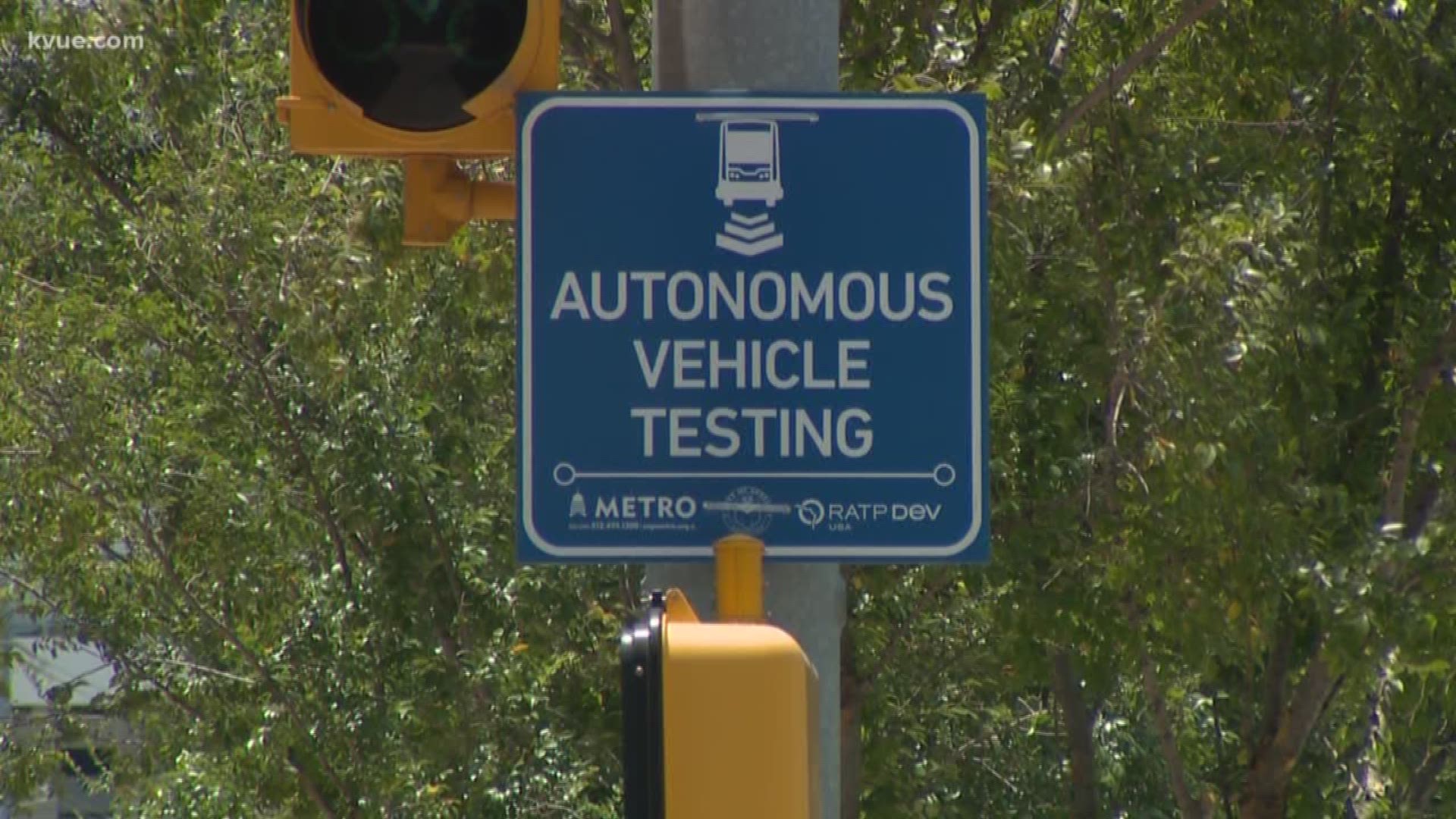AUSTIN — Capital Metro went ahead with its driverless shuttle testing after all.
In a press release sent out Tuesday morning, spokesperson Mariette Hummel wrote, "We improvised last night and tethered the vehicle to other buffer vehicles, so it could still complete the mapping without the permit. We are still on schedule with our testing."
The transportation agency delayed the testing Monday night, citing a federal permitting issue.
CapMetro tested out two driverless shuttles on Third Street starting at midnight. The shuttles traveled from the Convention Center to the Republic Square Park.
Dionysi Damaskopoulos, an engineer with Easy Mile, came into town on Monday to help with the launch.
"We'll be deploying and setting up the vehicle for its route," he said.
CapMetro Spokesperson Mariette Hummel said some of the things they looked at included how the technology is working, the vehicle's performance and if it's safe.
Safety is obviously a big factor. So, we asked Domaskopoulos how his vehicle would detect objects and stop. He said there are several factors.
"How fast the object is moving, how fast our vehicle is moving as well, where it comes from, where it approaches from. That's all going to change the way the vehicle behaves. So, if it's from afar and the vehicle can see it, it's monitoring it, the vehicle will slow down," he said.
Blue and white signs that read, "autonomous vehicle testing" are already on every block of Third Street, warning drivers that for the next two weeks two shuttles will be traveling back and forth carrying only CapMetro employees.
There will also be a buffer vehicle in front and in the back. These autonomous vehicles won't be going faster than two miles an hour during the testing phase.
Still, CapMetro has a warning for the public: please stay out of its way.
"I advise people to stay away from it because these vehicles are just being tested. We haven't trained the vehicles yet. We haven't tested these vehicles ourselves yet. It's not safe to ride them for the general public yet," said Hummel.
One autonomous vehicle can seat six while six others can stand. The second autonomous vehicle can seat eight.
The testing phase ends on Aug. 5. The CapMetro Board will then decide which manufacturer they like at the August or September board meeting, at which time they could order and lease six autonomous vehicles.
When CapMetro receives those, the pilot program will begin and will then pick up members of the general public. Hummel said a customer representative will always be on board during the pilot program.

